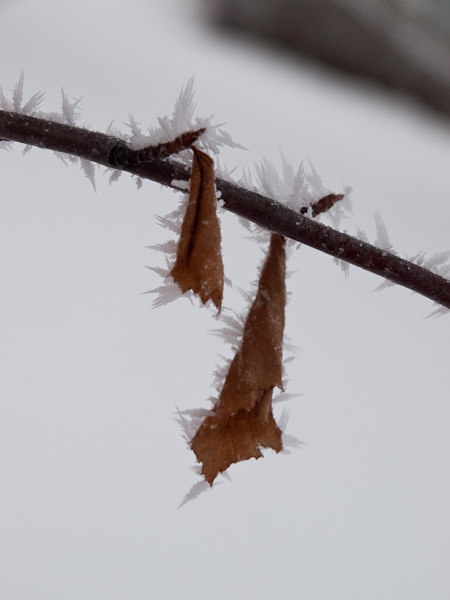I discovered Ken Libbrecht’s book called Field Guide to Snowflakes, a book, yes, all about snow. There is much going on in this frozen world that we are mostly unaware of, and it’s darn fascinating stuff! The book has photos of snowflakes produced under all sorts of weather conditions, including different temperatures and amounts of humidity. It’s a great book that both pleases the eye and expands your knowledge of the natural world at the same time.
Libbrecht suggests getting a black cloth (though a piece of black paper could easily substitute) and placing it on a surface to catch snowflakes. Then one can study them with a magnifying glass or jeweler’s loupe. (Or maybe a macro lens…hmmm.)
The crystals in the photo, as best as I can identify by reading and comparing, are columns or prisms and were probably formed in temperatures ranging from 18˚F to 27˚F. The geometric shape we think of as the typical snowflake, the thin and flat, six-sided crystal, develops when the weather is a bit warmer – in the 27˚F to 32˚F range – or when it’s colder – from -8˚F to 18˚F. The temps between -5˚F and 10˚F produce the fanciest, most delicate of the hexagonal flakes.
I recently read a BBC article about an early photographer, Wilson A. Bentley. Ten of his pioneering photographs of snowflake crystals – he was the first to photograph snowflakes, and did so over a century ago – were sold in a recent NYC auction. According to the article, Bentley took photographs of snowflakes because he wanted to share their beauty with everyone.
Bentley was quoted as saying, “Every crystal is a masterpiece of design, and no one design is ever repeated. When a snowflake melts, that design is forever lost.” True wabi-sabi, those snowflakes!







